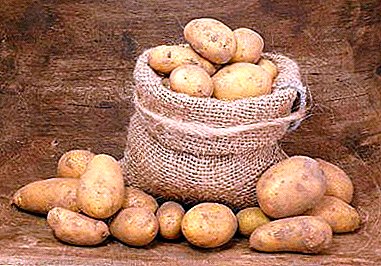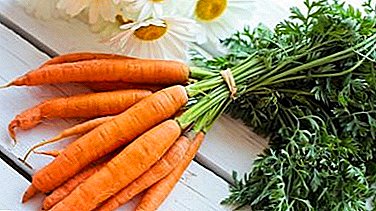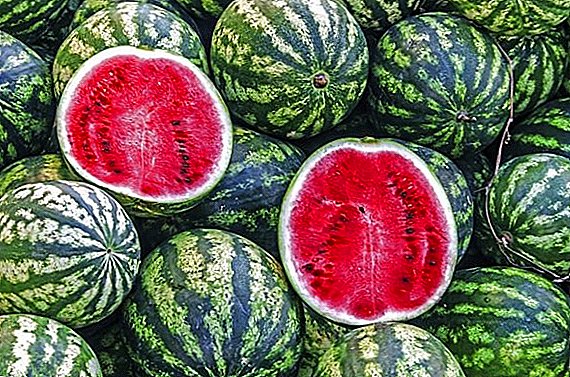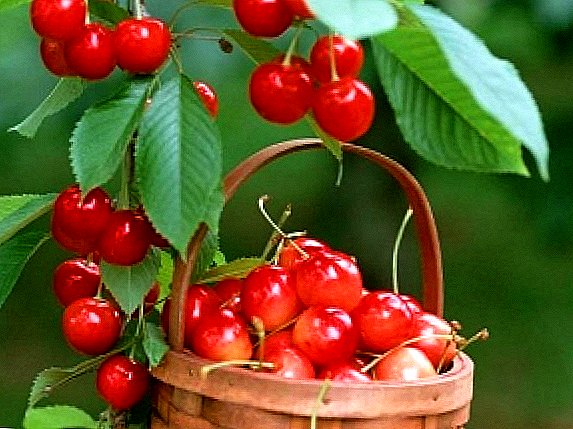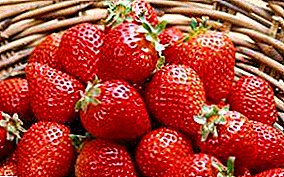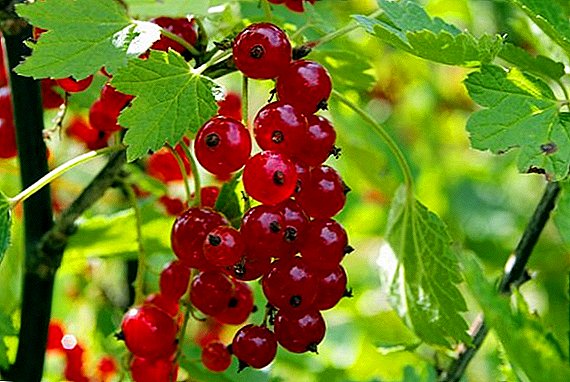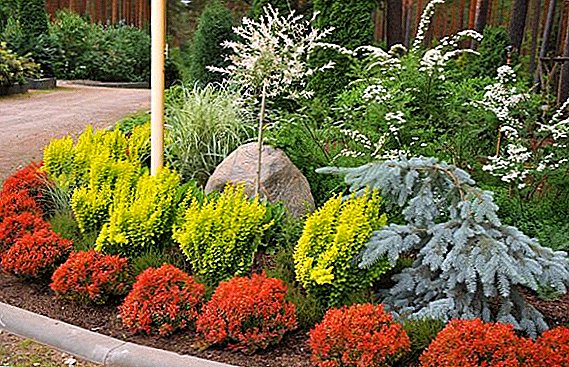 The barberry of Thunberg in its natural habitat grows on the mountainous slopes of China and in Japan. Because of its decorativeness, it became widespread in the nineteenth century. Through the efforts of breeders bred more than fifty varieties of plants.
The barberry of Thunberg in its natural habitat grows on the mountainous slopes of China and in Japan. Because of its decorativeness, it became widespread in the nineteenth century. Through the efforts of breeders bred more than fifty varieties of plants.
Varieties and varieties of barberry Thunberg
It is impossible to describe all the varieties of the barberry of Thunberg; most common in the gardens of our latitudes.
Variety Erecte. Shrub half meter in the shape of a pyramid. The shoots are studded with thorns, the leaves are juicy green. Flowers of yellow or red color, by the autumn appear bright red berries that adorn the plant until the winter period.
 Grade Admiration. Shrub with a magnificent ball-shaped crown. A special feature of the plant is foliage: in summer, the color of small leaves in the shape of an oval is yellow or orange, in winter the shade changes to red with a yellow border.
Grade Admiration. Shrub with a magnificent ball-shaped crown. A special feature of the plant is foliage: in summer, the color of small leaves in the shape of an oval is yellow or orange, in winter the shade changes to red with a yellow border.
Barberry Coronite. Differs in a pointed at the ends of the form of leaves, painted in purple with green edging. As the plant grows, the leaves turn purple. The branches of this barberry studded with pink thorns. In the spring, yellow flowers appear, and by the autumn bright, shiny red berries.
Harlequin. The adult bush reaches two-meter height. Branches and bark of a yellow or red color. The leaves are small, coarse, color from pink to burgundy. At the beginning of summer it is decorated with yellow flowers, at the end of summer - with glossy berries of an oblong form in coral color.
Grade Rose Glow. Shrub grows up to one and a half meters. Young shoots are pinkish-red, adults purple. It is noteworthy that the leaves change color to the color of the branches. On young branches leaves are coarse-pink, on old ones it is darker and without variegation. Petals of flowers are painted in carmine, yellow in the middle. Berries ripen in early autumn.
 Golden Rocket. Crohn's form resembles a pyramid, foliage of yellow-green color. In the first month of summer blooms yellow. In late summer - early autumn, red berries appear.
Golden Rocket. Crohn's form resembles a pyramid, foliage of yellow-green color. In the first month of summer blooms yellow. In late summer - early autumn, red berries appear.
Orange Rocket. The shape of the crown is pyramid with bright orange foliage, which at the beginning of autumn changes color to pinkish-red.
Sort Darts Red Lady. The lush rounded crown is covered with bright scarlet foliage. In May, yellow or red flowers bloom. Shoots with thorns, have the same color as the leaves. In the autumn there are red berries.
Red Chief. Two-meter shrub with shoots of red. At the end of May, it blooms with yellow flowers, gathered in inflorescences of 3-7 pieces. Pink or red berries appear in September and often hibernate under the snow.
Did you know? Scientists have found records on the plates in which the barberry is mentioned. Plates refer to the Assyrian culture.
How and where to plant the barberry Thunberg correctly
Decorative plants are determined by sufficient sunlight. Therefore, before planting the barberry Thunberg, decide what color of plants you prefer. In a place open to the sun, the leaves of the barberry will be juicy, bright with a purple color, on the crown part the color of the leaves will be green. You can not plant barberries in lowland areas: there is often accumulated rainfall, and the plant does not like their surplus.
Barberry Thunberg is not against neighbors, but there should be a distance of about one and a half meters between them for the full development of the shrub and the acquisition of a decorative look. You should not plant it near the windows of the house: the plant attracts insects that will bother you.
 Planting barberry shrubs can be in the spring and autumn, but there are some nuances. When planting, you decide: in the spring, do it before the buds bloom. In the autumn - note that the root system must be developed and strong for a quiet winter.
Planting barberry shrubs can be in the spring and autumn, but there are some nuances. When planting, you decide: in the spring, do it before the buds bloom. In the autumn - note that the root system must be developed and strong for a quiet winter.
Prepare the ground before planting: mix two parts of sod land, one sand and one humus. In such a soil, the shrub will receive all the necessary nutrients and oxygen, thanks to the sand.
Important! Check the soil composition for acidity - in case of elevated rates, add lime to the soil (about 350 g, slaked).If you want to plant single bushes, leave a distance of two meters between seedlings. Want a dense living fence - plant three or four seedlings next to it. As they grow, they will take their position. Dig a hole half a meter deep, fill in the prepared soil, place the seedling. When falling asleep, lightly apply the earth and water.
Recommendations for the care of barberry
Despite the fact that the shrub feels good in a dry hot climate, caring for the barberry of Thunberg implies both watering and feeding, although without surplus.
Watering and mulching the soil
If precipitation regularly falls in summer, the plant does not need additional watering. Water once a week with a lack of moisture or no rain. To saturate the soil with oxygen and rid the plant of weeds, carry out regular loosening. Weeds do not just interfere with the barberry, but also pull nutrients out of the ground, thereby weakening the development of the shrub. Immediately after planting barberry seedlings, mulch around the trunk. You can use sawdust, nutshell or peat.
Fertilizer and dressing
 Barberries begin to fertilize in the second year of life. To do this, use fertilizers with nitrogen. The best option is urea (30 g per bucket of water). Then during the year they feed up several times with fertilizers saturated with microelements. Summer top dressing includes complex fertilizer in granules, such as Kemira-Universal. In early autumn, adult shrubs fertilize with superphosphate and potash (15 and 10 g under each bush).
Barberries begin to fertilize in the second year of life. To do this, use fertilizers with nitrogen. The best option is urea (30 g per bucket of water). Then during the year they feed up several times with fertilizers saturated with microelements. Summer top dressing includes complex fertilizer in granules, such as Kemira-Universal. In early autumn, adult shrubs fertilize with superphosphate and potash (15 and 10 g under each bush).
Pruning
At the age of two it's time to do the thinning barberry. Barberry pruning is carried out in the spring to remove dry and weakened branches. If this is not done, they will interfere with the growth and development of new shoots. In addition, it will form the crown of the plant. In order to distinguish dry branches, wait until the leaves appear, they will prompt. In early spring, pruning may remove up to 70% of shoots. Sometimes the shrub needs re-thinning. It depends on the variety that you grow. In this case, conduct additional pruning barberry autumn.
Winter hardiness of barberry
Young plants in the late fall, it is desirable to cover spruce branches. Take shelter as soon as the temperature drops to -7 ° C. In this case, the soil will freeze to 5 cm. The immature root system must be protected, and, in addition, the branches must be protected from freezing and ice. You can wrap shoots in sackcloth, and cover with lutrasil on top and roll them up with a rope so that it does not open up when the wind gusts. If you use only one material, the plant will peel. In the spring, remove the shelter early so that it does not restrict the plant to grow.
Reproduction of barberry Thunberg
There are several methods of breeding barberry: seeds selected from the berries; cuttings harvested during pruning; rooting long shoots of a bush or dividing a bush donor.
Seeds
 Choose only the ripe fruits of the shrub, remove the seeds from them and dry. Seeds need to be processed: rinse with running water, then soak in a weak solution of manganese. It is necessary to sow seeds on 3 cm in depth, in the cleared and friable soil. Seeds overwinter and sprout in the spring.
Choose only the ripe fruits of the shrub, remove the seeds from them and dry. Seeds need to be processed: rinse with running water, then soak in a weak solution of manganese. It is necessary to sow seeds on 3 cm in depth, in the cleared and friable soil. Seeds overwinter and sprout in the spring.
If you did not have time to plant in the fall, mix the seeds with sand and keep it indoors at + 3 ° C. In April, at the end of the month, seeds can be sown on the garden bed. With the growth of seedlings thinned out, remain the most viable. At a permanent place can be landed next year. So that in two years the barberry began to bear fruit, it will need to be planted later.
Cuttings
In the first days of summer, cuttings up to 15 cm long are cut from the side shoots. Root them in a greenhouse. The lower leaves are removed, and the tip of the branch is dipped into the stimulator of rhizome development. The cuttings are covered with film and watered from time to time. For quick and good rooting, the soil must often be loosened, the greenhouse ventilated. After the leaves appear, the greenhouse is opened, hardening, thus, rooted cuttings.
Layering
The easiest way of reproduction - layering. Find branches on a bush no older than a year. Under the crown, dig the holes above the roots about 20 cm deep, after the soil dries out, lower the selected branches into the holes and sprinkle them with earth. Try to press them, leaving the tips on the surface. Watering such seedlings need frequent. By the autumn season you will have ready planting material.
Dividing bush
 For breeding division dig a bush, divide into several bushes. Each must have strong shoots. On the same day, delenki need to be planted on the prepared soil. Water frequently, but not abundantly.
For breeding division dig a bush, divide into several bushes. Each must have strong shoots. On the same day, delenki need to be planted on the prepared soil. Water frequently, but not abundantly.
The use of barberry Thunberg in landscape design
Each barberry variety differs in some way from another type of shrub — its height, crown shape, color of leaves, flowers, and even branches. All these differences give gardeners and landscape designers an extraordinary flight of fancy. The barberry can be used both on beds, and in a mixborder, in the Alpine hill. Low-growing shrubs will be a multicolored border, and the height of a bush of barberry Thunberg up to two meters makes it a wonderful living fence. Varieties of plants growing in the form of columns will be good in a single planting or will become a central figure in any decorative plot.
Due to the wide palette of color barberry, you can combine as you like in rock gardens and mixes compositions, creating masterpieces of design art. Very beautifully colored barberry will look on the background of decorative needles. In general, all varieties get along well with conifers and flowers. In addition to purely decorative purposes, you can spread barberries on the slopes to strengthen the soil.
Interesting! Tibetan monks use the fruits of barberry in cooking. They worship the plant as a source of youth and strength.
What diseases and pests can spoil the barberry, how to deal with them
 One of the most dangerous parasites of the barberry is aphid. Because of it, the leaves dry and frown. Shoots do not produce buds. In the spring, for prevention, the bushes should be sprayed with tobacco dust tincture. The peppered moth strikes the fruits of barberry. To get rid of it, treat Fufanon or Decis.
One of the most dangerous parasites of the barberry is aphid. Because of it, the leaves dry and frown. Shoots do not produce buds. In the spring, for prevention, the bushes should be sprayed with tobacco dust tincture. The peppered moth strikes the fruits of barberry. To get rid of it, treat Fufanon or Decis.
Attention! When working with chemical compounds, remember your own safety: protect your respiratory system, eyes and skin of your hands and face.
Fungal diseases are also dangerous for the barberry. Mealy dew affects the entire aboveground part of the plant. Symptom - white bloom, the method of struggle - spraying sulfur-containing drugs. It is necessary to carry out spraying two times: during blooming of buds and after flowering. If necessary, you can spray in the fall. Damaged areas must be removed. Rusty spots on the leaves weaken the plant, shoots develop poorly and freeze over in the winter. Before and after flowering shrubs sprayed with copper oxychloride.
The barberry of Thunberg will make your site unique, saturated with all sorts of colors and shapes. This plant is unpretentious, which makes it possible to grow it in almost any conditions, decorating their garden and flower garden.


